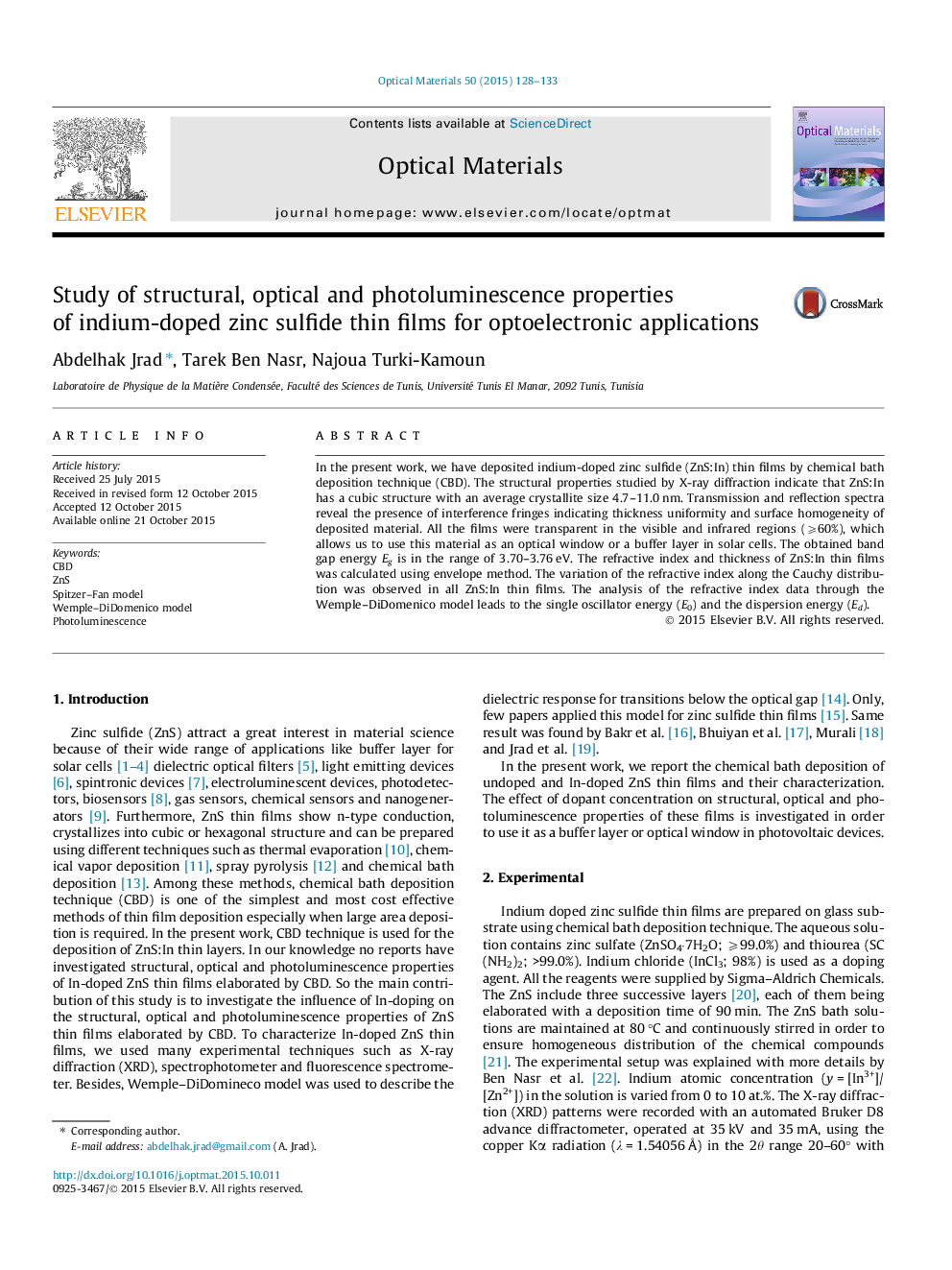| کد مقاله | کد نشریه | سال انتشار | مقاله انگلیسی | نسخه تمام متن |
|---|---|---|---|---|
| 1493438 | 1510784 | 2015 | 6 صفحه PDF | دانلود رایگان |
• Cubic ZnS:In thin films were synthesized.
• The film was featured with a high transmittance in the visible and infrared regions.
• Band gap of the ZnS:In thin films was determined from the differential reflectance spectra.
• Optical constants are determined using Wemple–DiDomenico and Spitzer–Fan models.
• ZnS:In thin films show emission in both UV and visible regions.
In the present work, we have deposited indium-doped zinc sulfide (ZnS:In) thin films by chemical bath deposition technique (CBD). The structural properties studied by X-ray diffraction indicate that ZnS:In has a cubic structure with an average crystallite size 4.7–11.0 nm. Transmission and reflection spectra reveal the presence of interference fringes indicating thickness uniformity and surface homogeneity of deposited material. All the films were transparent in the visible and infrared regions (⩾60%), which allows us to use this material as an optical window or a buffer layer in solar cells. The obtained band gap energy Eg is in the range of 3.70–3.76 eV. The refractive index and thickness of ZnS:In thin films was calculated using envelope method. The variation of the refractive index along the Cauchy distribution was observed in all ZnS:In thin films. The analysis of the refractive index data through the Wemple–DiDomenico model leads to the single oscillator energy (E0) and the dispersion energy (Ed).
Journal: Optical Materials - Volume 50, Part B, December 2015, Pages 128–133
